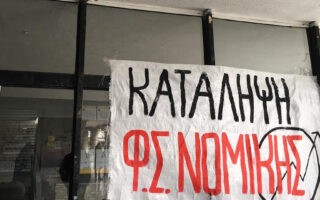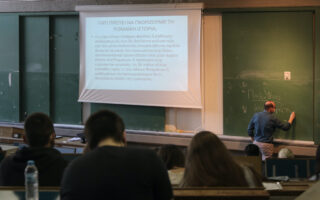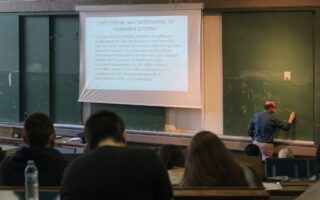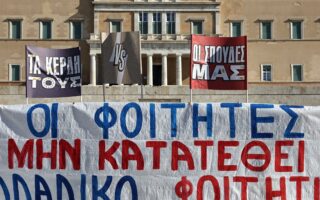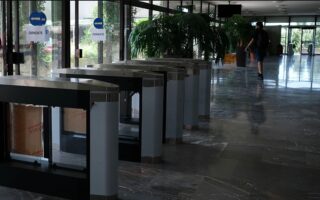A diary of the tumultuous days at Columbia
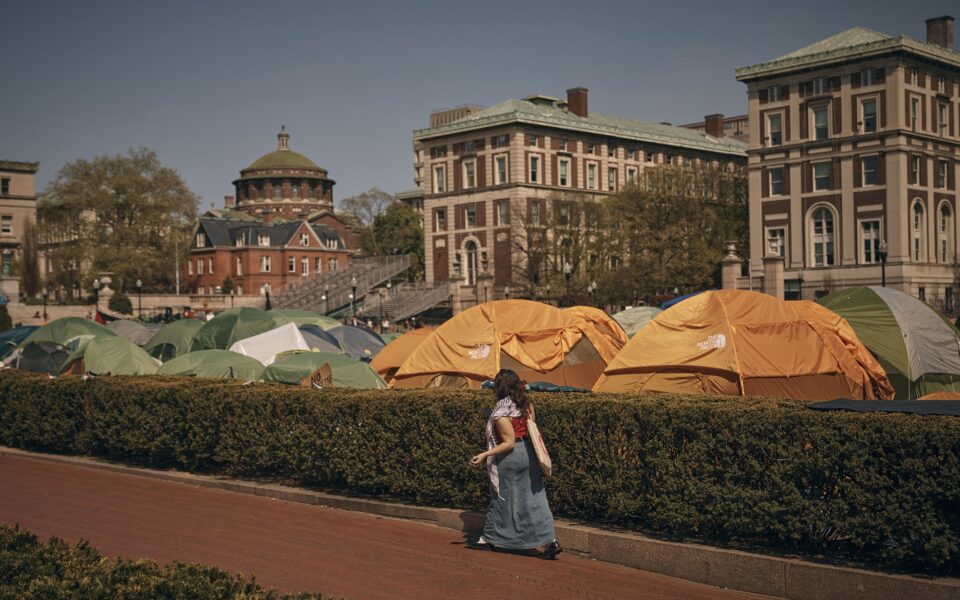
Sunday, April 28, 11.30 a.m.: I head up 116th St to campus. It is quiet, as though the protests of last week never happened. There are no police cars. A few journalists are setting up on the traffic island on Broadway. Outside the gates a small group of Orthodox Jews, in fur hats and leggings, hold up placards denouncing Zionism. One of them is being interviewed by a TV crew. Only in New York.
A bad omen
Monday, April 29, 2 p.m.: In through the 117th St gate for my last class of the semester. Campus is peaceful and there are graduating students in their gowns and others sunbathing under the trees. A thickset man from Allied Universal Security Services comes out of Low Library; it seems a bad omen. We read Stendhal’s fabulous “Life of Henry Brulard.” After, I wander down the steps of Low Library. The university administration has issued the students an ultimatum: Clear off the lawn by 2 p.m. or face suspension and worse. There is a lot of anxiety and curiosity to see what will happen. Above the encampment, a crowd is listening to a student in shorts and keffiyeh who is standing on the sundial. I cut round the far side of the lawn to reach the library. Outside the camp entrance colleagues of mine in reflective vests have come to protect the protesters in case police move in. Outside the 117th St gate a line of press stretches back all the way to 116th St. There must be dozens of journalists, all hoping to catch the action.
Monday, April 29, 4.45 p.m.: The 2 p.m. deadline has passed without incident. I return to campus for a discussion on the protests of 1968. The history department planned this months ago. We are conscious of the uncanny parallels with what is going on now. What do I learn? First, the memory of 1968 continues to haunt Columbia. Second, the students had been right on the major issues. Third, the protests strengthened the right nationally and undermined the Democrats. And fourth, the right in the USA today is more extreme than then and wants a culture war.
After we are finished, I find the encampment is still there. Dozens of tiny Israeli flags have sprouted on the lawn in the center of the campus and pictures of the hostages held by Hamas have been pasted to a stone wall. There are still people milling around the encampment but some students are starting to pack and leave.
Tuesday, April 30, 4.45 a.m.: I wake to learn protesters have occupied Hamilton Hall. A friend sends footage showing black-clad figures entering campus through a dorm window on 114th St. This will change everything. From what I have seen and heard on campus, the majority of students and faculty here see nothing wrong with a peaceful protest on the lawn, however inconvenient. Fewer will support the occupation of a building, the disruption it causes, and the violent manner in which it happened. I expect the police will be called back.
Tuesday, April 30, 3 p.m.: We meet off campus for student end-of-term presentations. It is the best we can do as campus is locked down. Some present their work in a garden under a cherry tree. It is a lovely day. But their voices are drowned out by the clatter of helicopters overhead.
A step too far
I wake to learn protesters have occupied Hamilton Hall. A friend sends footage showing black-clad figures entering campus through a dorm window on 114th St
Tuesday, April 30, 7.45 p.m.: Back from downtown, I exit the 110th St subway station to find the police have blocked Broadway. There are officers at every intersection, affable and at ease. It is a warm summery evening. Dozens of students are milling around, many of them locked out of their dorms. Some stand around chanting. 116th St is blocked and no one can get onto campus. At the top of 115th St, I stand with many others at a metal barricade trying to see inside the gates across the road. No traffic runs down Broadway. No trains are stopping at 116th St. I think I hear the chants of protesters inside but can’t be sure. A policeman says to another: “We’re not going [in] yet. We’re waiting for someone from the college.” An operation is clearly in the offing, presumably to clear Hamilton Hall. Most of the students I talk to say that was a step too far. But interestingly there is little blame for those inside: Everyone is upset to see the university the site of a police operation for a second time and no one I talk to has a good word to say for the university leadership. Not even the police actually. One of them says to a friend of mine, “There are only 20 of them in there,” as if to say what is all the fuss about.
Unprecedented scenes
Tuesday, April 30, 9.30 p.m.: Unprecedented scenes unfold on our screens. Campus is shut down. The cameras show a file of police entering the second floor of Hamilton from Amsterdam up a kind of mobile ramp. I guess the larger force is going in, as last week, through the 114th St gates. The professional journalists have little idea what is happening; the best coverage has come from the students on the paper and the university radio station but they have been threatened with arrest if they are on campus. All around the campus large crowds are standing and watching. People are very upset. In an hour or so it is over and the arrested students have been taken away. It begins to rain and the streets become quiet.
Wednesday, May 1, 10.30 a.m.: A quiet morning with no chants and no helicopters overhead. We are informed everyone has to stay off campus today. I have my office hours on Zoom. Students are furious and several are deeply upset. One tells me students felt their professors had been with them and the administrators against them. Another is guilty she was not with the protesters. From another: How could they bar access to the library when they are all supposed to be writing their term papers? I have yet to meet a student with a good word to say for the university leadership.
Eerily empty
Wednesday, May 1, 11.12 a.m.: University President Minouche Shafik sends an email explaining why she called in the police and looking forward to a time when, in her words, Columbia can lead the way in new thinking that “will make us the epicenter, not just of protests, but of solutions to the world’s problems.” Is that not what the student protesters believe they are doing – solving a world problem? On Broadway, police guard every gateway. No one is going in or out. Campus is eerily empty. The only sound is of the workmen putting up the marquees for commencement. Universities are supposed to be places of learning. I ask myself what our president has learned.
Mark Mazower is Ira B. Wallach Professor of History at Columbia University
